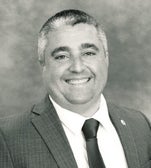Key Metric: Region’s Banks Healthier After Recessionary Dip
The health of banks across the United States suffered after the subprime mortgage crisis ushered in the Great Recession. But in Central Massachusetts, banks have been recovering slowly over the last three years, according to a key industry barometer.
The core capital ratio average — measured by core capital divided by assets — for 26 banks based in Central Massachusetts has topped 10 percent this year, which one industry analyst calls healthy. (The individual ratios range from a high of 22.2 percent for Framingham Co-operative Bank to a low of 7.1 percent for Avidia Bank.)
David Brown, a partner with Boston-based RMPI Consulting LLC, said the ratio is among the most important measure of health that regulators look at because it reflects the extent to which banks can cover losses if loans go bad. And Brown said there has been increasing scrutiny on banks' ratios since the 2008 crash that led to the recession.
Indeed, the last time the banks' ratio averaged above 10 percent, it was the first quarter of 2008.
One institution, Clinton Savings Bank, got a boost to its long-term health with a $12-million loan from the federal government, which it has begun repaying.
The loan was part of the U.S. Treasury's Capital Purchase Program (CPP), part of the $467.2-billion Troubled Asset Relief Program (TARP), which provided $2.3 billion to 10 Massachusetts banks, including Clinton Savings. Eight have repaid in full. Clinton Savings has partially repaid its loan while Boston-based One United still owes its full $12 million, according to a recent report by the special inspector general for TARP.
Clinton Savings' holding company, Wachusett Financial Services, returned $3 million to the U.S. Treasury in April. And the bank says it intends to pay back another $3 million by the end of the year, and the remaining $6 million by 2014, just before the interest rate jumps from 5 percent to 9 percent.
In addition, Clinton Savings has paid nearly $1.6 million in dividends to the Treasury as of June 30. Unlike a number of its peers across the country, it has not missed any dividend payments.
TARP is largely known as the program — passed in 2008 as part of the government's response to the subprime mortgage crisis — that bailed out automakers and failing financial giants such as American International Group. The Treasury expects to lose money on the overall TARP program, but expects to profit from CPP, which benefitted Clinton Savings and other smaller institutions.
Shaky Ground Led To Loan
Robert Paulhus Jr., CEO and president of Clinton Savings, said in an email that his bank decided to participate in CPP “because it provided an additional 'financial cushion' during a time of historic economic uncertainty.”
“As a top community bank, we consider it our responsibility to look at all means available that will help the individuals, families and business of our region,” Paulhus said.
He said his bank had to prove to regulators it was healthy to participate.
“CSB could not have participated in the Capital Purchase Program if it were not a strong financial institution,” he said.
The bank reported to the Treasury in 2009 that the loan was crucial to its continued ability to lend to businesses and homeowners.
Today, Clinton Savings is as healthy as it's been in years, according to its core capital ratio, and the CPP loan played a part.
From late 2009, just before the bank received the loan, to the second quarter of this year, the bank's core capital ratio has climbed nearly 2.8 points to just under 10 percent, putting it on par with its peers in Central Massachusetts, according to data from the Federal Deposit Insurance Corp.
The bank's overall lending has fallen somewhat since 2009. The sum of its commercial and industrial loans, residential loans and loans to individuals have fallen from $375 million in the third quarter of 2009 to $328 million in the second quarter of this year.
But the bank has increased profits. In fact, profits doubled in 2011 to more than $2.4 million, Paulhus reported in the bank's annual report.
He credited a new bank auto loan program that boosted vehicle loans fivefold as well as a more flexible mortgage program that allows borrowers to have more choice over some terms.
As the Treasury seeks to wind down the CPP, Clinton Savings is one of 325 banks out of 707 across the country that received a total of $205 billion in CPP funds
Brown, the banking analyst, said that although regulators define “well capitalized” as 6 percent or better, they have begun to scrutinize ratios more closely in recent years.
“Eight percent is the new six,” Brown said.
Though he would not opine on any individual bank, Brown said 10 percent — the Central Massachusetts bank average — is a healthy capital ratio, and noted that Massachusetts and New England have the healthiest banking sector in the country.
Michael Watson, vice president of supervision in the Federal Reserve's Boston office, confirmed that capital is important as an “absorber of risk,” but he disputed that there are changing standards on how regulators assess capital.
“We give great consideration to what's on the balance sheet, what the companies actually booked, the product lines the company offers, the manner in which it funds itself and its interest-risk position,” Watson said.
Brown said a decision to accept TARP money isn't always easy.
Some took loans even though they didn't really need them, he said. He recalled one client bank — which was perfectly healthy — that was worried that if it didn't accept the capital cushion, it would be looked upon in a negative light by regulators or the market.
Read more
UniBank Marks Debut Of Worcester Office
Commerce Bank Completes Acquisition













0 Comments